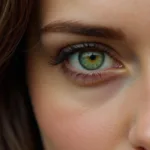Lavender, a delicate and soothing hue, often evokes feelings of tranquility and peace. But what two colors make lavender? Understanding its color composition allows you to recreate this beautiful shade and explore its diverse range of tints and tones in your creative endeavors. This article will delve into the fascinating world of color mixing to uncover the secrets behind creating lavender, exploring different combinations and variations.
Decoding Lavender: A Blend of Blue and Red
At its core, lavender is a tint of purple, meaning it’s created by adding white to a pure purple base. And that purple base? It’s a combination of blue and red. Therefore, to achieve lavender, you essentially need blue, red, and white. The specific shades of blue and red you use will influence the final lavender hue, allowing for a spectrum of variations from cool, bluish lavenders to warmer, reddish ones.
What two colors make lavender most effectively? A cool-toned red like crimson or magenta, blended with a vibrant blue like ultramarine or cobalt, typically provides the richest purple base for creating lavender. Experimenting with different ratios of these colors can lead to unique and personalized lavender hues.
Exploring the Nuances of Lavender Creation
The process of creating lavender is not as simple as just throwing blue, red, and white together. The proportions matter significantly. A higher ratio of blue will result in a cooler, bluer lavender, reminiscent of periwinkle. Conversely, more red will lead to a warmer, reddish lavender that leans towards mauve. The amount of white added determines the lightness or tint of the lavender, ranging from pale, pastel lavenders to richer, more saturated versions.
If you’re struggling to achieve the desired lavender hue, consider starting with a pre-mixed purple and then adding white. This method simplifies the process and ensures a balanced purple base. Similar to what colors match with plum purple, achieving the perfect lavender requires patience and experimentation.
Mastering the Art of Lavender Mixing: Tips and Tricks
Here are some valuable tips to help you create the perfect lavender:
- Start with small amounts: Begin by mixing small quantities of blue and red to establish your purple base. This allows for better control and prevents wasting paint if the initial mix isn’t quite right.
- Adjust gradually: Add white in small increments to control the lightness of the lavender. It’s easier to add more white than to try and darken an already pale mixture.
- Test on a sample surface: Before applying your lavender mix to your final project, test it on a sample surface to ensure it matches your desired shade.
- Consider the medium: The type of medium you’re using, whether it’s paint, dye, or digital color, will influence the final result. Digital color mixing follows different principles than mixing physical pigments.
- Keep track of your ratios: If you create a particularly pleasing lavender hue, note down the ratios of blue, red, and white used so you can recreate it later.
 Lavender Variations with Different Color Ratios
Lavender Variations with Different Color Ratios
Lavender in Design: A Touch of Elegance
Lavender, with its soothing and sophisticated aura, has a versatile presence in various design applications. From interior design to fashion, its calming influence can transform spaces and elevate aesthetics. Lavender pairs beautifully with a variety of colors, including gray, white, and silver for a sophisticated look, or with contrasting shades like yellow or green for a more vibrant and playful palette. Similar to understanding what colors compliment aqua and yellow, understanding lavender’s complementary colors can enhance its impact in any design scheme.
“Lavender’s versatility lies in its ability to evoke both calmness and sophistication,” says renowned color consultant, Amelia Dubois. “Its subtle elegance makes it a timeless choice for a variety of design applications.”
Conclusion: Unlocking the Lavender Palette
Creating lavender is a journey of exploration in the realm of color mixing. By understanding the fundamental principles of combining blue, red, and white, you can unlock a diverse palette of lavender hues to express your unique creativity. So, experiment with different ratios, embrace the nuances, and discover the perfect lavender shade for your artistic vision. Remember, much like understanding what 2 colors make violet, understanding lavender allows you to unlock a world of creative possibilities.
FAQ
- Can I use any shade of blue and red to make lavender? While technically any blue and red can create a purple base, certain shades yield more desirable lavender hues. Cool reds and vibrant blues tend to work best.
- What’s the difference between lavender and purple? Lavender is a tint of purple, meaning it’s created by adding white to purple.
- Can I make lavender with other colors besides blue, red, and white? Not directly. Lavender is inherently a tint of purple, derived from blue and red.
- What if my lavender looks too pink or too blue? Adjust the ratios of red and blue accordingly. More blue will shift it towards a cooler tone, while more red will warm it up.
- Where can I find pre-mixed lavender paint? Most art supply stores offer pre-mixed lavender paints in various shades.
- What colors go well with lavender in interior design? Lavender pairs beautifully with gray, white, silver, yellow, and green. Knowing are purple and yellow complementary colors can further expand your design possibilities.
- How can I use lavender in digital art? Digital color mixing allows you to select and blend specific shades of blue, red, and white to create lavender using color pickers and blending tools.
Need Help with Your Color Choices?
Contact us at Phone Number: 0373298888, Email: [email protected] or visit us at 86 Cau Giay, Hanoi. We have a 24/7 customer service team ready to assist you. You might also find our articles on what color with green makes purple helpful.

